
Artificial Intelligence (AI) is revolutionizing the way pipelines are managed
The pipeline integrity industry is crucial for ensuring the safe and efficient transportation of oil, gas, and other fluids. With thousands of miles of pipelines stretching across the globe, it’s essential to have robust systems in place to monitor and maintain their integrity. Artificial Intelligence (AI) is revolutionizing the way pipelines are managed, offering advanced solutions that enhance safety, reduce costs, and improve efficiency.
AI technology, including machine learning and data analytics, can be applied at various stages of the pipeline integrity management process. Let’s explore some of the key applications and benefits of using AI in the industry.
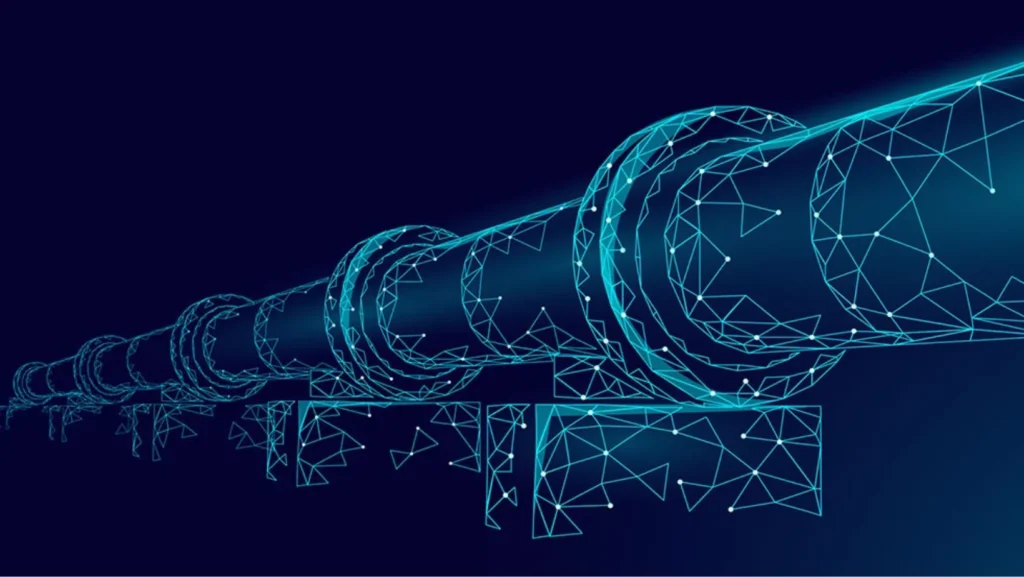
- Predictive Maintenance: AI can enable predictive maintenance by analyzing real-time data from sensors installed along the pipeline. By continuously monitoring parameters such as pressure, temperature, and flow rate, AI algorithms can identify patterns and anomalies that indicate potential issues. This proactive approach helps to prevent failures, reduce downtime, and optimize maintenance activities.
- Leak Detection: One of the most critical aspects of pipeline integrity is detecting leaks promptly. AI algorithms can analyze data from multiple sources, including acoustic sensors and satellite imagery, to identify leaks accurately. By comparing current data against historical patterns, AI can assess whether a leak exists, locate its precise position, and estimate its severity. Early detection of leaks improves environmental protection and minimizes the risk of accidents.
- Corrosion Monitoring: Corrosion is a significant threat to the integrity of pipelines, and timely detection is crucial to prevent catastrophic failures. AI systems can analyze data from corrosion sensors, cathodic protection systems, and other sources to identify areas prone to corrosion. Machine learning algorithms can predict corrosion rates based on historical data and provide recommendations for mitigating the problem. This proactive approach helps operators implement appropriate preventive measures and extend the lifespan of pipelines.
- Risk Assessment: AI can facilitate comprehensive risk assessments by analyzing vast amounts of data, including historical records, inspection reports, and environmental factors. Machine learning algorithms can identify potential risks, such as soil movement, natural disasters, or equipment aging, and calculate their likelihood and potential impact. This information allows operators to prioritize maintenance activities and allocate resources effectively, improving safety and cost savings.
- Pipeline Monitoring: AI-powered systems can continuously monitor pipelines using a combination of sensors, drones, and satellite imagery. Real-time data can be analyzed with historical information to detect anomalies, such as vibrations or temperature variations, that may indicate potential issues. Rapid identification of abnormal behavior allows for swift response, preventing accidents and minimizing the impact on operations.
- Decision Support: Integrating AI systems with existing pipeline integrity management software provides operator decision support capabilities. AI algorithms can analyze data, identify trends, and make predictive recommendations regarding pipeline maintenance, repairs, or replacement. This data-driven approach helps operators optimize their decision-making process, reduce costs, and improve overall pipeline integrity.
- Regulatory Compliance: The pipeline industry is subject to stringent regulations to ensure safety and environmental protection. AI can assist operators in complying with these regulations by providing accurate data analysis, reporting, and documentation. AI systems can automatically generate compliance reports, flag potential violations, and provide real-time information to regulatory authorities, streamlining the regulatory process and reducing administrative burden.
In conclusion, the use of AI in the pipeline integrity industry is transforming the way pipelines are monitored and managed. From predictive maintenance and leak detection to risk assessment and regulatory compliance, AI-powered systems offer significant benefits. By leveraging the power of AI, operators can enhance safety, reduce costs, optimize maintenance activities, and improve overall pipeline integrity. As technology continues to advance, the pipeline integrity industry can expect further improvements driven by AI innovations.
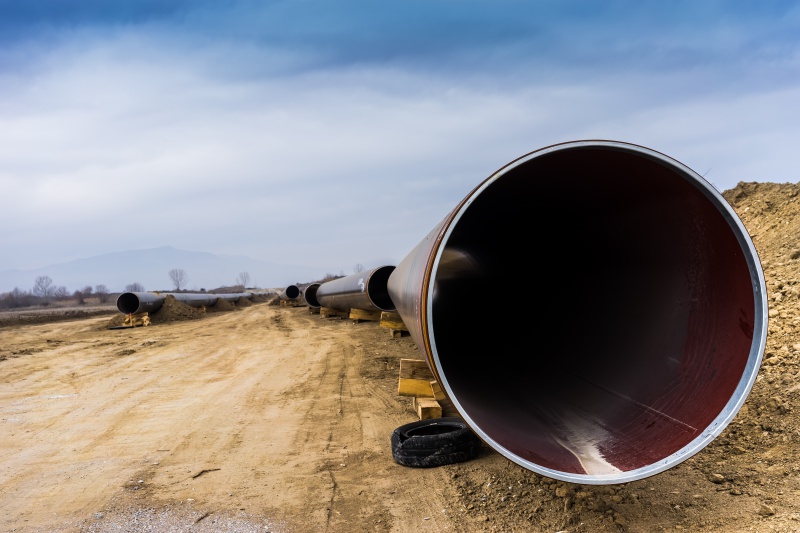
Enhancing Pipeline Integrity: The Advantages of Automatic Internal and External Pipeline Coatings
Pipelines play a vital role in the transportation of fluids, such as oil, gas, and water, across vast distances. To ensure their longevity and structural integrity, pipelines require protective coatings. In recent years, automatic internal and external pipeline coatings have gained prominence as versatile solutions for enhancing pipeline durability. In this blog post, we will explore the advantages of these coatings, their application processes, and how they contribute to the overall maintenance and performance of pipelines.
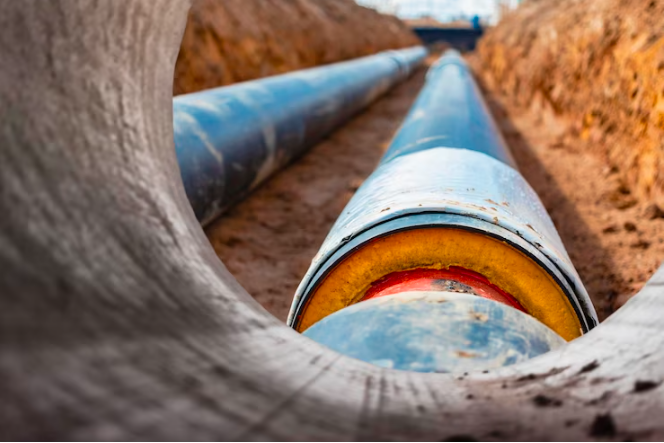
I. Understanding Automatic Internal Pipeline Coatings
Automatic internal pipeline coatings, also known as pipeline lining or pipe rehabilitation, involve the application of specialized coatings to the inner surface of pipelines. These coatings serve various purposes, such as corrosion prevention, reduction of frictional resistance, and enhancement of fluid flow.
1. Corrosion Prevention:
Internal pipeline coatings act as a physical barrier between corrosive fluids and the pipe’s wall, shielding it from chemical reactions. They are designed to withstand the harsh conditions inside the pipeline, thereby extending its service life.
2. Enhanced Flow Efficiency:
The smooth surface provided by internal coatings reduces frictional resistance, ensuring a more efficient flow of fluids. This not only maximizes the pipeline’s capacity but also reduces energy consumption, contributing to cost savings.
3. Reduced Maintenance Costs:
The protective barrier created by these coatings minimizes the need for regular maintenance and repair. This leads to significant cost reductions over the pipeline’s lifetime.
II. Exploring Automatic External Pipeline Coatings
Automatic external pipeline coatings involve the application of coatings on the outside surface of pipelines to protect against external factors such as corrosion, abrasion, and environmental conditions.
1. Corrosion Protection:
External pipeline coatings shield the pipeline from corrosive elements in the soil, water, or atmosphere. These coatings act as a barrier, preventing direct contact between the pipeline and the corrosive agents, thereby reducing the risk of corrosion-related damages.
2. Impact and Abrasion Resistance:
External pipeline coatings provide a protective layer that helps withstand impacts from external objects and resist abrasion caused by soil movement or contact with machinery. This aspect extends the pipeline’s durability, even in challenging terrain or harsh operating conditions.
3. Environmental Protection:
Automatic external coatings also provide insulation against temperature fluctuations, protecting the pipeline from extreme heat or cold. Additionally, they act as a barrier against UV radiation, preventing degradation caused by prolonged exposure to sunlight.
III. The Application Process of Automatic Internal and External Pipeline Coatings
1. Surface Preparation:
Before applying any coating, proper surface preparation is essential. Both internal and external pipeline surfaces must be cleaned thoroughly to remove contaminants, rust, or old coatings that could affect the adhesion of the new coatings.
2. Coating Application:
a. Internal Pipeline Coatings:
Internal coatings are typically applied using automated internal pipe coating equipment. This equipment sprays or flows the coating material uniformly along the pipeline’s inner surface, ensuring complete coverage. The coatings are then cured using heat or UV light, depending on the specific coating material.
b. External Pipeline Coatings:
External pipeline coatings are applied either by manual or automated methods. The manual application involves using brushes, rollers, or sprayers to evenly distribute the coating material. In contrast, the automated application utilizes specialized equipment, such as robotic systems, for precise and efficient coating application.
3. Quality Control and Inspection:
After the coatings are applied, thorough quality control and inspection procedures are carried out to ensure adherence to standards and specifications. This includes testing for coating thickness, adhesion, and overall quality.
IV. Conclusion
Automatic internal and external pipeline coatings offer significant benefits in terms of corrosion prevention, enhanced flow efficiency, reduced maintenance costs, and protection against environmental factors. The application process, including proper surface preparation and careful coating application, ensures optimal performance and longevity of the coatings. By incorporating these coatings into pipeline infrastructure, industries can enhance their operational reliability, reduce environmental impact, and minimize overall maintenance costs, ultimately ensuring the efficient transport of vital fluids across long distances.
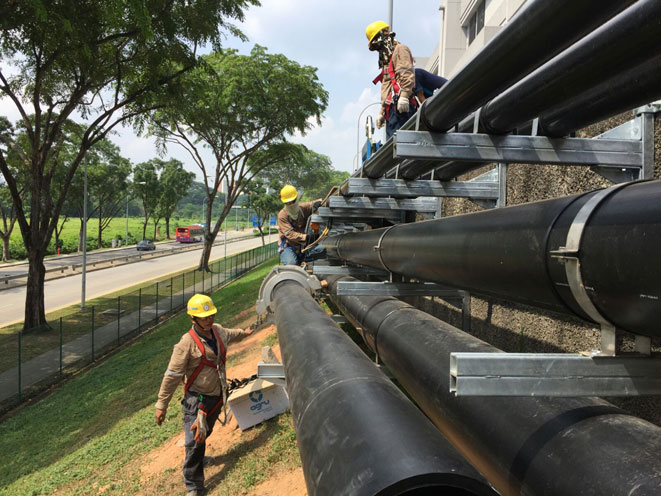
Protecting the Flow: The Importance of Oil Pipeline Coatings
Oil pipelines play a crucial role in transporting vast amounts of oil across long distances, ensuring a steady supply to meet the world’s energy demands. However, these pipelines face various challenges, including corrosion, abrasion, and environmental factors, which can compromise their integrity and efficiency. That’s where oil pipeline coatings come in – serving as a vital defense system to protect and preserve these critical infrastructure assets.
Oil pipeline coatings are specialized materials applied to the external surface of pipelines to provide a barrier against corrosion, erosion, and other damaging elements. These coatings offer several benefits that help safeguard pipelines and extend their lifespan. Let’s explore some of the key advantages of oil pipeline coatings:
1. Corrosion Protection: Corrosion is a major concern for oil pipelines, as it can lead to leaks, ruptures, and environmental hazards. Pipeline coatings act as a protective layer, preventing corrosion by creating a barrier between the metal pipe and any corrosive agents present in the surrounding environment. Coatings can be made from various materials, including epoxy, polyurethane, or fusion-bonded epoxy (FBE), each offering different levels of corrosion resistance.
2. Abrasion Resistance: Oil pipelines often face challenges from the abrasive nature of the materials being transported. Coatings with high abrasion resistance properties can minimize the impact of these abrasive particles, reducing wear and tear on the pipeline surface. This helps to maintain the pipeline’s structural integrity and prevent costly repairs or replacements.
3. Environmental Protection: Oil pipelines frequently cross diverse environments, including challenging terrains and sensitive ecosystems. Pipeline coatings act as a protective shield against environmental factors such as moisture, chemicals, and extreme temperatures. By limiting direct contact between the pipeline and the surrounding environment, these coatings mitigate the risk of degradation or damage caused by these external factors.
4. UV Resistance: Above-ground pipelines are exposed to ultraviolet (UV) radiation from the sun. Continuous exposure to UV rays can lead to material degradation and premature aging of the pipeline. Specialized coatings with UV-resistant properties offer protection against these harmful rays, helping to maintain the structural integrity and visual appearance of the pipeline.
5. Enhanced Flow Efficiency: Coatings with smooth surfaces and low friction properties can contribute to improved flow efficiency within the pipeline. Reduced friction allows oil to flow more smoothly, reducing energy loss and ensuring a more efficient transportation process. This results in significant cost savings and increased operational efficiency for oil companies.
6. Easy Inspection and Maintenance: Pipeline coatings can be designed to have specific color variations or markings, aiding in visual inspection and maintenance programs. By easily identifying potential areas of concern, operators can monitor the pipeline’s condition, promptly address any issues, and implement maintenance measures to extend its service life.
In conclusion, oil pipeline coatings are a critical component in ensuring the longevity and integrity of oil transportation infrastructures. By providing a protective barrier against corrosion, abrasion, and environmental factors, these coatings help minimize the risk of leaks, reduce maintenance costs, and enhance the overall efficiency of the oil transportation process. Investing in high-quality pipeline coatings is essential to protect valuable assets and maintain a safe and reliable oil supply for years to come.
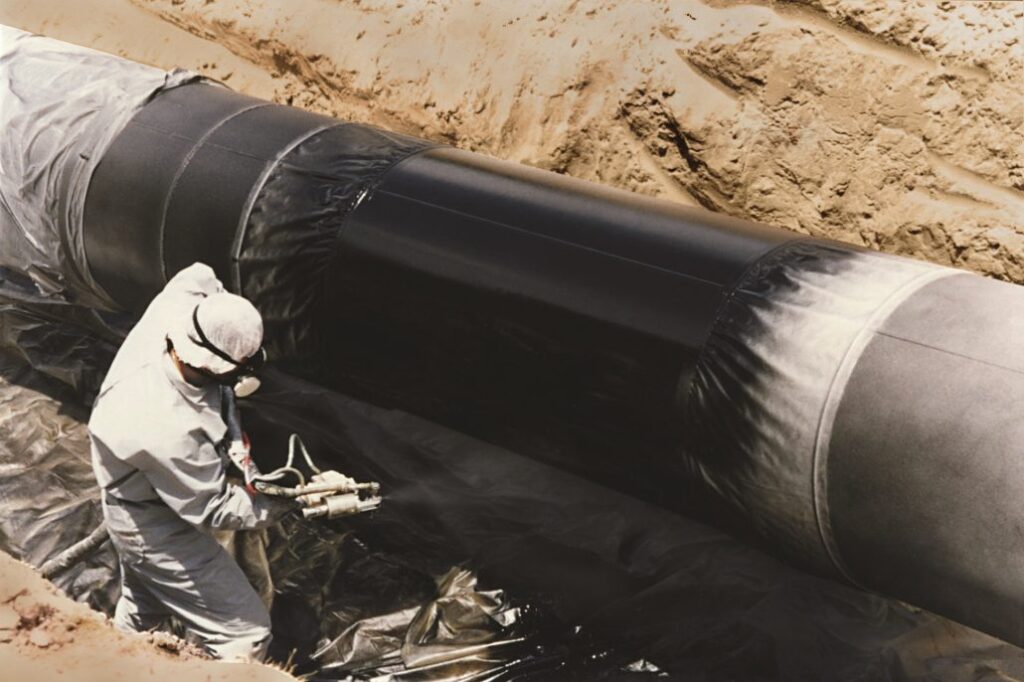
Why polyurea has become the go to oil pipeline coating
THE GO TO OIL PIPELINE COATING
olyurea is quickly becoming the go-to coating for oil pipelines, as it provides superior protection against corrosion compared to traditional coatings. It’s a two-component material that is sprayed on the surface of a pipe and cures into a seamless barrier that not only prevents rust and other elements from corroding the pipeline, but also helps maintain its structural integrity.
The use of polyurea in oil pipeline coatings has been steadily increasing over the past few years due to its many advantages over other types of pipeline coatings. Its superior resistance to corrosion makes it ideal for protecting pipelines from the harsh environmental conditions they are exposed to every day. Polyurea can stand up to high temperatures, high pressure, harsh chemicals, and even ultraviolet light without breaking down or losing its effectiveness. This makes it ideal for use in offshore drilling operations where there are often nearby sources of water and other fluids that can corrode unprotected pipes.
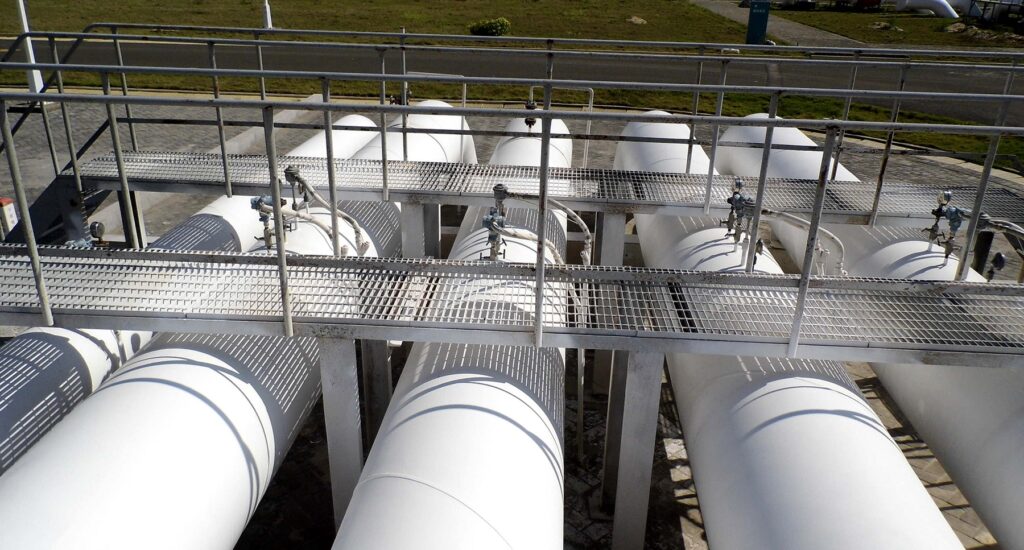
WHAT IS POLYUREA?
Polyurea is a coating material used in various industrial applications for decades, including oil and gas pipeline coatings. It is a thermosetting resin that forms when two components are mixed and then cured. Polyurea coatings have excellent physical properties such as flexibility, high tensile strength, chemical resistance, abrasion resistance, tear resistance and low moisture absorption. These properties make polyurea well-suited for use in offshore or subsea oil and gas pipelines that must withstand extreme environmental conditions.
Polyurea has many advantages over traditional pipeline coatings such as epoxy or polyurethane. One of the most important advantages is its fast curing time; when applied to a surface, polyurea can harden within minutes rather than hours or days as with other materials. This makes it an ideal choice for quick repairs or installation in remote sites as well as emergencies. Polyurea is highly resistant to corrosion, which allows it to perform extremely well in wet environments such as water treatment plants and marine applications.
In terms of its composition, polyurea consists of two components that react with each other during the application process. The first component comprises isocyanates while the second contains active hydrogen compounds such as amines or alcohols. When these two components come into contact with each other, they form a polymer chain that binds them together and creates the resulting coating material. For this process to occur properly, the correct ratio of Isocyanate to Hydrogen Compound must be maintained during the mixing process; if this ratio is not met, then the resulting product will be weak or brittle and easily damaged by environmental factors such as heat and cold temperatures or UV radiation exposure.
When applied correctly, polyurea coatings can protect from abrasive elements such as sand particles and saltwater spray found in offshore environments while also providing insulation against thermal shock from temperature changes due to seasonal weather variations. Polyurea can also serve as a vapor barrier keeping corrosive gases out while allowing moisture trapped inside surfaces to escape without causing damage.
Due to its impressive performance characteristics and versatility across multiple industries, including oil refinery operations and water treatment systems, polyurea is becoming increasingly popular among engineers for any number of projects requiring top-quality protection from harsh environmental conditions or demanding mechanical stressors like vibration or movement caused by waves or tides at sea level installations. It’s important, however, that proper application techniques are followed strictly during installation; otherwise, premature failure may result due to improper mixing ratios or improper curing times, so experienced professionals should always be consulted prior to beginning work on any project involving this material to maximize performance and longevity results upon completion.
BENEFITS OF USING POLYUREA FOR PIPELINE COATING
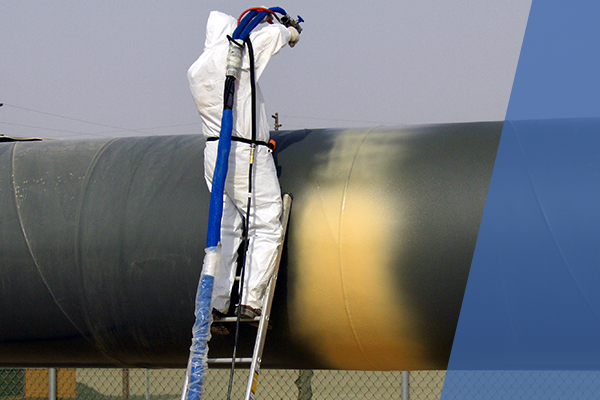
A major benefit of using polyurea as an oil pipeline coating is its ability to be applied quickly and easily. Traditional coatings can take days or weeks to cure properly, whereas polyurea can be applied in just minutes with no curing time required. This allows for significantly faster completion times on projects involving large pipelines and reduces installation costs significantly compared to other types of coatings. It also helps reduce labor costs since fewer workers are needed to install it than with other coatings, which can sometimes require large teams of workers working long hours over several days or weeks.
In addition to its superior resistance to corrosion and ease of application, polyurea has excellent adhesion properties that make it capable of forming a strong bond with various surfaces, including steel and concrete. This ensures that any cracks or weak spots in the pipe wall are sealed securely, preventing any further damage from occurring inside the pipe wall over time due to leaks or corrosion. Its flexibility also allows it to expand and contract with changes in temperature without cracking or failing like some traditional coatings would do under similar conditions.
Polyurea also offers excellent insulation properties that help prevent heat loss during transport, which helps reduce energy costs associated with shipping crude oil through long distances via pipelines and reduces heat loss during refining processes at refineries located near production sites. In addition, polyurea does not contain any volatile organic compounds (VOCs) so there is no need for special permitting related VOC emissions when applying the coating onsite at production facilities – this benefits both environmental safety and cost savings associated with avoiding permit fees or additional fines imposed by regulatory bodies related VOC emissions near production sites.
Finally, one last benefit of polyurea is its low maintenance requirements throughout a pipeline’s lifespan due mostly to its durability and resistance against harsh elements such as UV rays, temperatures extremes, solvents, salt water exposure etc… All these factors combined make polyurea one of most effective yet cost-efficient solutions available today when it comes selecting an appropriate coating option for oil pipelines used in transporting crude oil around the world safely and efficiently while ensuring regulatory compliance necessary ensure safety standards followed around workplace environments near production sites where employees come into contact with hazardous materials involved in drilling operations worldwide each day without fear of health risks associated possible exposure aforementioned elements involved drilling process itself otherwise might result costly lawsuits company itself should an unfortunate incident occur premises work . With all these advantages taken into consideration , it’s no wonder why more companies are opting use polyurea as their choice coating solution when constructing new oil pipelines looking to extend life existing ones currently service .
Why ArmorThanes Oil Pipeline Coatings are the Best Choice
The oil and gas industry is one of the world’s most critical industries, with oil pipeline transport playing a significant role. To prevent leakages along the pipeline network, coatings play a crucial role. ArmorThanes has been a leading name in the industry, providing high-quality coatings that outperform other options in the market. This blog post will explore why ArmorThanes oil pipeline coatings are the best in the market.
- Durability
One of the main advantages of using ArmorThanes coatings on oil pipelines is their durability. They are the most dependable choice for any pipeline transport provider. The coatings are made from advanced technology that withstands extreme weather conditions, heavy impact, and abrasion. In addition, the coatings are moisture and corrosion resistant, making them the best choice for oil and gas pipelines. - Low Maintenance Cost
The durability and resilience of ArmorThanes oil pipeline coatings reduces maintenance and repair costs. Unlike other coating options, you rarely need to repair or recoat, which translates to significant cost savings. The cost of repairs and maintenance can amount to millions of dollars each year, but with ArmorThanes coatings, these costs are significantly reduced. - Environmental Friendly
ArmorThanes oil pipeline coatings are environmentally friendly, making them the right option for those who concern about being environmentally mindful. The coatings reduce the risk of oil leakages into the environment by preventing soil exposure. ArmorThanes coatings also protect the pipeline from rust and corrosion, which could lead to environmental disasters, including oil spills. - Easy Application
ArmorThanes oil coatings are easy to apply, ensuring that the project takes a short time to finish. The coatings can be applied using various methods, including brush, spray, or roll. Once applied, the coatings dry quickly, and the pipeline can be used immediately, saving time for the user. This feature makes ArmorThanes coatings the best option for an oil transportation company in need of an efficient and quick solution. - Reliable Technical Support
The reliability of coatings also depends on a consistent quality output and a reliable technical support team. ArmorThanes’s technical support team is among the best in the industry, providing excellent customer service and support. They provide you the guidance you need, including troubleshooting, answering technical questions, and ensuring that your coating project is delivered successfully.
Overall, ArmorThanes oil pipeline coatings outperform other coating options in the market, making them the best choice for oil and gas pipeline transport providers. They are durable, easy to apply, environmentally friendly, and have low maintenance costs. In addition, ArmorThanes coatings have a reliable technical support team that helps you along the way. For a cost-effective and sustainable solution, ArmorThanes oil pipeline coating is the perfect choice for you.
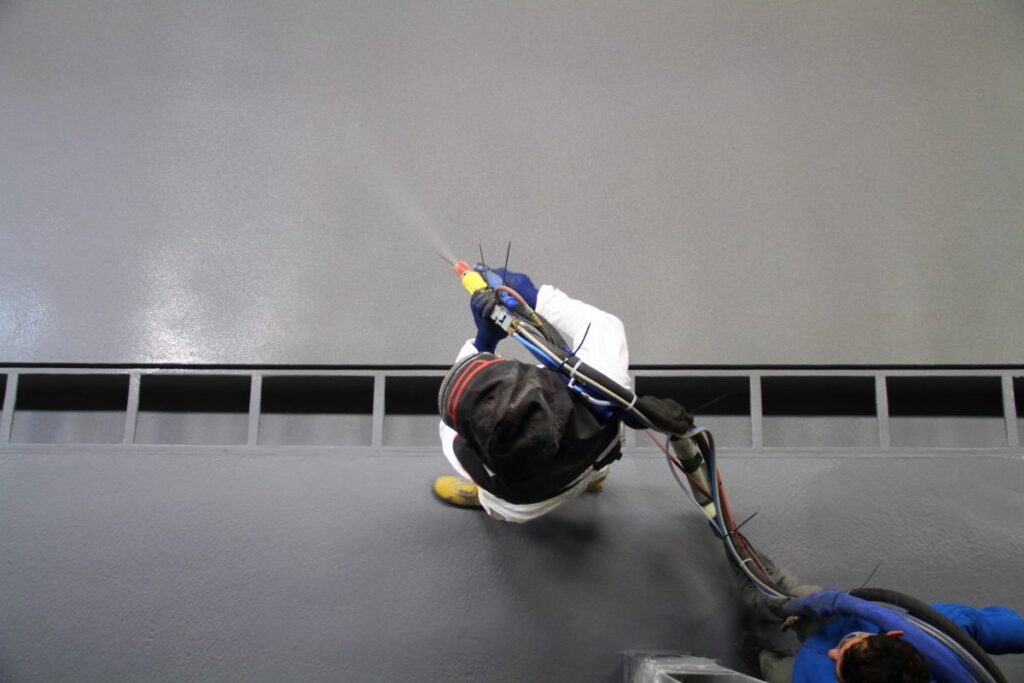
6 Things Every Pipeline Operator Must Be Aware of about Polyurea Pipeline Coatings
Polyurea coatings have been used within the pipeline industry for a long time. They have a range of advantages over other types of coatings however, they do have some drawbacks.
If you’re a pipeline owner responsible for the maintenance of pipelines and pipelines, it’s essential to be aware of what you’re dealing with, and what coatings can assist you to protect you and your pipeline infrastructure.
To give you an understanding of polyurea coatings We’ve provided some of the common questions here.
1. What is polyurea coatings composed of?
Polyurea coatings comprise elastomer substances made from step-growth polymerization. This is a procedure that mixes reactive isocyanate materials together with synthetic resin. The process of polymerization gives polyurea its coloration as well as moisture and flame resistance.
2. What is the difference of polyurea, epoxy, and polyurethane?
The easy thing is to make the terms misunderstood. One of the main difference among the two materials are that polyurea is superior in abrasion and temperatures, UV, moisture as well as chemical resistance in comparison with epoxy coatings. It also cures quicker.
In comparison to polyurethane, polyurea exhibits greater chemical and water resistance and endurance.
3. What are the benefits that come with polyurea coatings?
There are many benefits that polyurea pipeline coatings provide over other kinds of coatings. The main advantages are:
- Resistance to corrosion and abrasion cause damage
- Flexibility and elasticity
- It is excellent at bonding to different surfaces such as wood, cement metals, concrete
- Resistance to UV light, temperature and weathering
- Quick curing time
- Can withstand extreme high tensile strength
- Chemicals, oil as well as salt and resistance
- Quick cure time dependent on the formulation
- Controlled finely coating thickness
These properties provide polyurea the ideal material to protect pipelines against corrosion and other harm. It also makes the coating more resistant to environmental influences such as weathering and temperature.
4. What are the drawbacks that come with polyurea coatings?
Although polyurea coatings provide a variety of advantages, they come with some limitations. The main negatives are:
- When the coating is applied without sufficient wetting time it might not stick to the substrate correctly This can make it difficult to handle.
- Certain polyurea coatings such as aromatic polyurea is able to react to UV radiation, and alter colors or even chalk up. This can be a problem in applications that require looking appealing. In these instances, it is recommended that aliphatic polyurea coatings must be utilized.
- The application of polyurea requires skilled specialists.
These constraints should be considered when choosing the right coating that is suitable for your pipeline. Always consult an coating expert to find out whether polyurea is the right option in your application.
5. How do polyurea coatings applied?
Polyurea coatings are applied using the use of high-pressure hot spray as well as cold spray, low-pressure cold spray or warm spray coating as well as other methods. Spray application permits for the coating to be rapidly and uniformly applied onto any surface on the pipeline.
As mentioned previously the application is best done by a qualified expert, which is why it’s crucial to speak with a specialist prior to beginning your project.
6. Where could these coatings be applied?
Polyurea coatings are applied to a range of surfaces such as metallic, concrete, and wood. They are especially suitable for use in industries that have an increased risk for corrosion and damage like:
- The pipelines as well as irrigation system
- Healthcare,
- Material handling,
- Concrete and concrete,
- Security and defense.
- Automotive, and much more.
The team at Oil Pipeline Coatings, our highly skilled staff are educated in all matters of pipeline coatings. We provide the following coatings: rubber, urethane, ArmorFoam, and ArmorLiner protective coatings to protect your offshore structures from corrosion. Contact us now to inquire about a quote!
